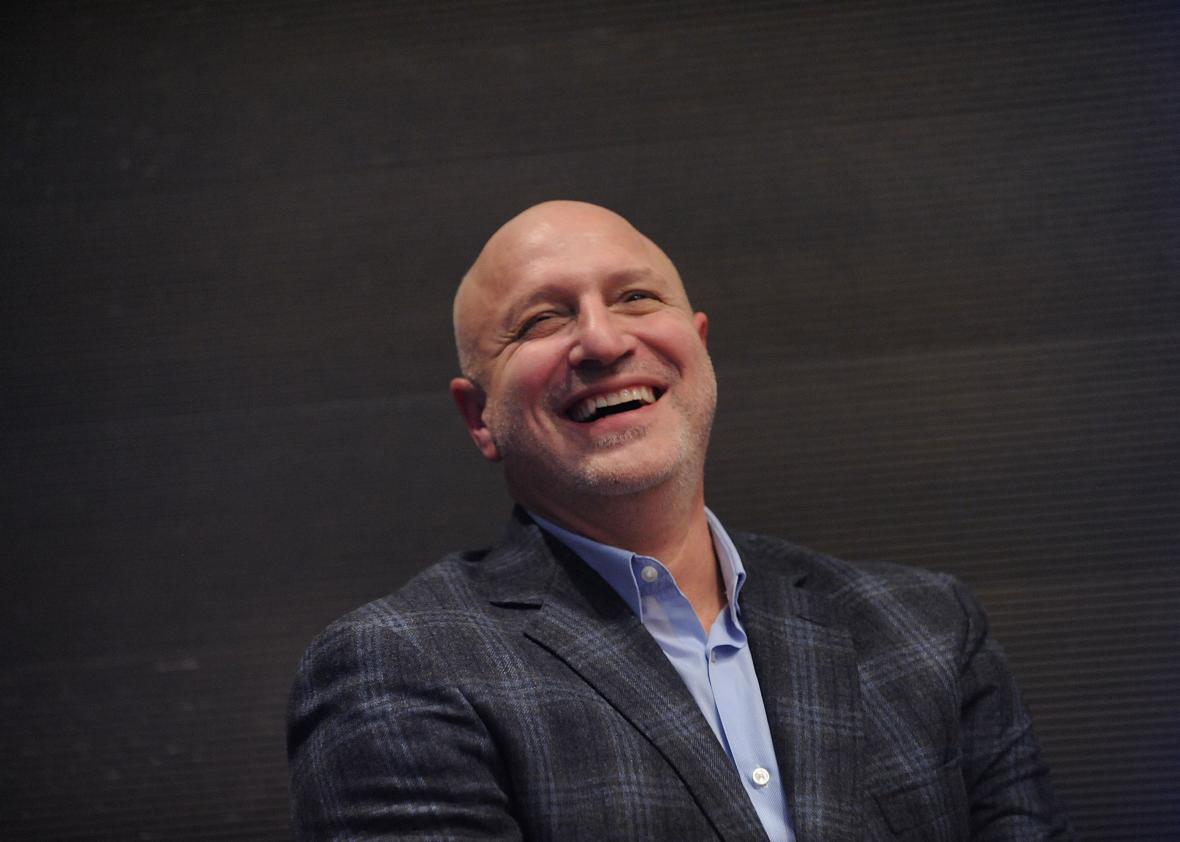Renowned chef, restaurateur, and Top Chef judge Tom Colicchio announced Tuesday that tipping will not be expected during the new lunch service at Craft, his flagship restaurant in Manhattan. Eater’s Ryan Sutton broke the news in an excellent feature that deeply explores the context in which Colicchio made his decision to move to a service-included model—which was absolutely a great decision.
Making servers rely on tips for the bulk of their income is terrible for many reasons. As Slate has previously explained, tipping doesn’t actually incentivize hard work, and it encourages servers to discriminate against demographic groups that are perceived to be worse tippers. And federal and state tip credits—which allow restaurants to pay workers as little as $2.13 an hour, as long as tips bring their total earnings up to minimum wage—create enormous practical problems. For one thing, some unscrupulous restaurateurs misuse tip credits so that their servers end up making less than minimum wage. And as Sutton describes, when the tip credit is properly used, tipping can create huge income disparities between servers and back-of-the-house workers at high-end restaurants, since cooks and dishwashers aren’t entitled to money from the servers’ tip pool.
Fundamentally, it’s also just plain unfair to make hard-working professionals depend on the whims of consumers to make a living. We don’t force people in other fields to earn their income that way. As Colicchio told Sutton, “It’s time for a change. It’s time to pay the servers a salary.”
So why don’t more restaurants abolish tipping? It’s a deeply ingrained habit, customers and servers alike feel attached to it, and change is hard. Sutton does a good job of explaining why it can be difficult for American restaurants to switch from a gratuity-based model to a service-included model (which is common in other countries):
Most restaurants that employ service-included policies, like Per Se in New York, the French Laundry in Yountville, or the chef’s counter at Meadowood in St. Helena, are high-end tasting menu establishments with price-flexible clients—patrons who’ll visit regardless of whether they’re aware that tipping is factored into the price. But at ambitious a la carte venues like Craft, service-included efforts are more rare, as more price-sensitive consumers might not understand why a burger at restaurant A, where tipping is banned, is more expensive than a burger at restaurant B.
Colicchio explains that since Craft currently doesn’t serve lunch, it doesn’t have to increase prices in order to incorporate a new service charge—instead, Craft can just set prices that include service.
To be fair, Craft’s new lunch roster is still pretty high-end. With plates ranging from $15 to $35 (and a menu that looks like it came out of the Brooklyn Bar Menu Generator), Craft is a restaurant that most middle-class people can afford to patronize infrequently, if at all. So although Craft may be a step down from Per Se, it’s not going to revolutionize the average New Yorker’s attitudes about tipping.
However, unless the government decides to end the tip credit altogether—which is highly unlikely—a shift away from tipping will happen gradually. For a restaurateur as powerful and high-profile as Colicchio to end tipping at his flagship restaurant, even if only for lunch, is a step in the right direction. Let’s hope Colicchio’s ideas about tipping become as popular as his Judge’s Table takedowns.
